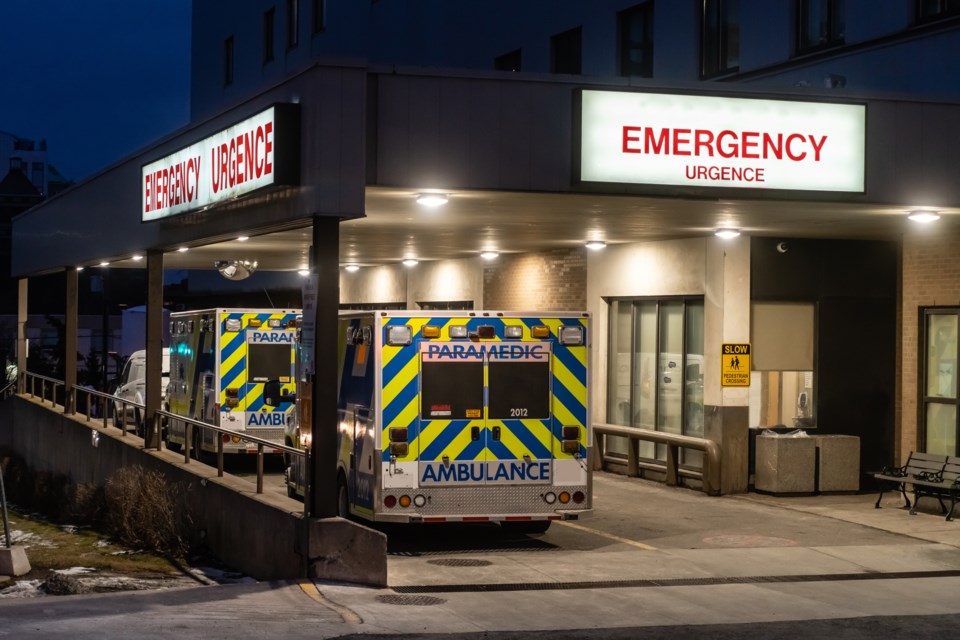Communities like Maple Ridge and Mission are feeling the effects of paramedic shortages with many ambulances going un-staffed for full shifts.
Ambulance Paramedics of BC sounded the alarm on Saturday morning saying that there were zero ambulances staffed in Maple Ridge that day in addition to no staffing on Sunday night. According to Ian Tait, a Chilliwack paramedic and the union's communications director, Mission also had no ambulances staffed on Sunday.
“We've been banging the drum about this for years about these very foreseeable problems that have played out exactly like we foretold. And now everybody's trying to shift the blame or refuse to accept that we're in a crisis,” Tait said. “We're projecting this to get worse every week and it so far has.”
Ambulance Paramedics of BC represents over 4,500 ambulance paramedics and emergency dispatchers in British Columbia.
Tait says it's no surprise that the issue has been ramping up in metro areas, noting it's been persistent in B.C.'s rural and remote communities for years.
“There's lots of remote communities in B.C. that don't have ambulances staffed for days and weeks on end.”
According to a statement from BC Emergency Health Services (BCEHS), when an ambulance is not able to respond to a call, BCEHS will send the closest available ambulance. Calls are triaged based on the severity of the emergency; patients who report life-threatening symptoms such as cardiac arrest, chest pain, breathing difficulties and severe bleeding or unconsciousness get priority.
“The old practice used to be ‘OK, no problem. If Mission has no ambulances, we'll bring in one from Abbotsford or we'll bring in one from Maple Ridge.’ But we're finding now that you're not able to rob Peter to pay Paul or move chess pieces around because those other communities are also short-staffed,” Tait said.
He says Sunday was a “prime example” of the issue with Mission functioning with zero ambulances and Abbotsford only running on less than 40 per cent of staff. Of the six or seven ambulances, only three were up and “so they couldn't even cover the Abbotsford volume,” he said.
Despite cities like Vancouver who receive assistance from fire departments, Maple Ridge Fire Department does not respond to low-acuity calls.
While staffing issues are at the forefront of the ambulance shortage, other problems exist in recruitment, pay and mental health, Tait told Glacier Media.
Ambulance services pay 30 per cent less than other emergency services, he said, and as an employer is far less attractive. Some rural communities are functioning on pager pay with employees receiving two dollars per hour until their pager goes off. If they get a call they're paid four hours minimum, at regular pay.
In addition, he said ambulance services are seeing an increase in PTSD and critical incident stress (CIS) with 30 per cent of employees either off work to deal with mental health or being treated for CIS while on the job.
“The people that are at work are doing twice the workload, seeing twice the trauma. So this is the first year in our history that mental health injuries have surpassed physical injuries,” Tait said.
In response to the shortage, BCEHS says that they have launched a national recruitment campaign with the hopes of filling positions and building capacity for the future.
“We are closely monitoring staffing levels across B.C. and taking actions to fill shifts as quickly as possible when they are vacant,” they said in a statement to Glacier Media. BCEHS also said it's working "to reduce its historical reliance on on-call staffing by introducing permanent positions particularly in rural and remote communities."
Tait says that while BCEHS went “all hands on deck” three months ago to fill positions, it will take years to train and help get paramedics that are hired today acclimated enough to make a difference.
According to Tait, there are 725 unfilled full-time positions in B.C. that they do not have staff for.
For those who do require ambulance services and are unsure if they should call with the current shortages, Tait says to always call.
“As a profession, we don't ever want to tell somebody not to call 911. The whole idea is we're just disgusted by the fact that we are not able to provide a better level of service,” he said.
He also noted that taking matters into your own hands during a medical emergency can cause more issues than waiting.
In a case where a senior has fallen, moving the individual without proper medical training can worsen the injury and cause more pain. In addition, if medical personnel are not able to determine the cause of the fall or the situation around the emergency, it can cause confusion when treating the individual.
“My advice is when in doubt, call, because the worst thing you can do is not call when you need one. Calling for one when you might not need one is OK, but never hesitate when you feel like you need an ambulance.”



